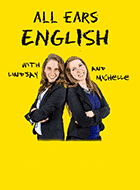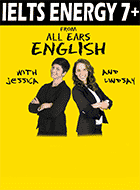Teachers, classes and textbooks are full of useful advice on how to get high scores on the IELTS exam.
Some of this information is useful, of course, but some of it is also too general to actually help you.
For example, teachers always tell students to “organize your ideas more clearly” or “use better vocabulary,” but do you know how to do this?
So, today, I’m not only going to tell you what to do, but what NOT to do.
I’m also going to tell you exactly what these gems of wisdom will do to affect your IELTS Writing Task 1 score.
#1) Do NOT write fewer than 150 words. If you write fewer than 150 words,
-
- your Task Achievement score will automatically go down.
- you will not have enough room to show a range of vocabulary, because you simply will not write enough words, so your vocabulary score will fall to a 5 or lower.
- you will probably not have enough room to show a range of sentence structures, because you simply will not write enough sentences, so your grammar score will fall to a 5 or lower.
#2) Do NOT start describing the numbers right away in your essay.
- Just like any academic essay, you must start Task 1 with an introduction. In the introduction you MUST rephrase the test question. If you do not do this, you risk not explaining clearly what the graph is about (for the Academic exam). This means scoring a 5 or lower on Task Achievement.
#3) Do NOT just state numbers.
- You must describe the numbers, not just list them. You have to say why the number is important, such as describing it as the highest or the lowest. If you just list numbers, you will get no more than a 5 for Task Achievement.
- For example:
- WRONG: In 2013, the number of classes reached 100.
- RIGHT: In 2013, the last year shown, the number of classes reached an all time high, with 100.
- You must also use linking words to join the sentences. If you do not, you will get a 5 or lower for Cohesion/Coherence.
- For example:
- WRONG: Numbers hit 700 in 1980. Numbers fell to 20 in 1990.
- RIGHT: The number of full-time workers increased to 700 in 1980, the highest amount during the period. Then, 10 years later, this number fell to 20, reaching the lowest point.
- For example:
- For example:
#4) Do NOT use the same sentence structure over and over. If you do, you will get a 5 or lower for Grammar.
- Some students memorize one or two structures, like “There was a decrease in 2014,” and use this same sentence structure throughout Academic Writing Task 1 so they are sure to not make any grammar mistakes. Well, even if there are no grammar mistakes, if you do not use varied sentence structure, the examiner can give you no higher than a 5 for Grammar.
To make sure you don’t make any of these mistakes, please read these rules more than once.
Then, the next time you practice a Task 1 essay, please check your work for these four things.
If you follow these rules, you are on your way to higher scores!
Check out our other articles on IELTS Writing Task 1
What questions do you have about IELTS Writing Task 1 Academic Essay?
Let us know in the comments below.








